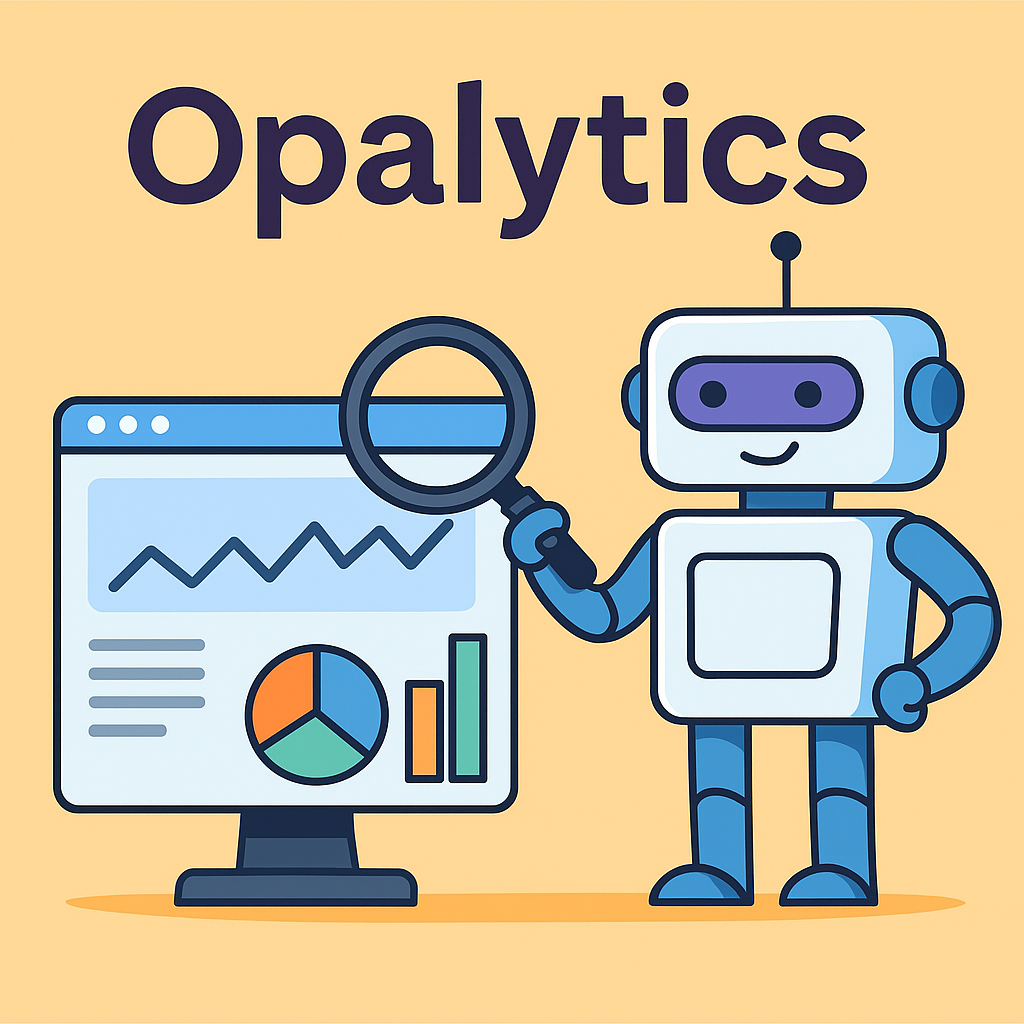My hackathon project for Optimizely OMVPs: plugging Piwik PRO into Opal, so you can just ask questions instead of fiddling with filters.
Let’s be honest: analytics dashboards are both powerful and a pain. Sure, the data is all there… somewhere. But nine times out of ten, what you really want is a quick answer to a simple question like “Which pages are killing it?” or “Why do people keep bailing from my site faster than my kids when I ask them to empty the dishwasher?”
That’s why I built Opalytics. It was my entry in the recent Optimizely OMVP hackathon, where the theme was “make Opal more useful.” My idea: let Opal talk directly to Piwik PRO Analytics. That way, instead of me digging through reports, I can just ask.
Why Piwik PRO? Because I’ve fallen a bit in love with it lately — it’s one of the few analytics engines that plays nice with both European and US privacy rules. And for this proof of concept, I used their public demo data (which, plot twist, only covers 3 months in 2021 — but hey, it’s enough to play with).
Opal isn’t just a pretty face
Here’s the cool bit: Opal (at least the version we OMVPs get to play with) isn’t locked down. You can extend it with custom tools. That means you can hook it up to whatever system you like — CRM, CMS, weather API, or in this case: Piwik PRO.
For Opalytics, I built a tool that lets Opal pull metrics straight out of Piwik. The result? I can type stuff like:
- “Which articles are engaging but don’t convert?”
- “Where are most of my visitors coming from?”
- “What pages are missing titles?"
And it’ll just… answer. No clicks. No dashboards. No dashboards about dashboards. Just answers.
(I’ll do another post soon on the geeky details of how to actually build and register these tools. For now, let’s look at the fun part: the demo.)
Playing 20 Questions with My Analytics
I fired up Opal and started throwing questions at it. Here are some of the highlights (with screenshots so you don’t think I made this up).
Starting broad
👉 “What are the overall site key metrics from 2021?”

Opal rattled off sessions, visitors, pageviews, conversions, and bounce rate in seconds. Normally that would take me three dashboards and a coffee refill.
What’s hot on the site
👉 “What are the 5 most popular URLs on the site – and can you share some details about each one?”

Boom — instant top pages list with sessions, time on page, bounce rate. The good, the bad, and the “why are people spending 0 seconds here?” mysteries.
Who are these people anyway?
👉 “Where are visitors geographically located?”

👉 “Is the majority of traffic on mobile as I suspect?”

Opal pulled out country-level conversions and device breakdowns (desktop, smartphone, tablet, even phablets and wearables — apparently people do browse on their fridge these days). And it turns out that I was wrong guessing that mobile was bigger.
Who’s sending me traffic?
👉 “Which acquisition channels are we seeing this traffic coming from?”

👉 “What are the 5 top referring websites sending traffic my way?”

Campaigns, search, social, direct, plus the usual suspects like LinkedIn and Facebook. Nice and tidy.
Conversions matter too
👉 “What is the goal for the contact form, and which pages converted to it?”

👉 “Which pages did visitors see before converting on choose-loan-for-you?”

This is the kind of funnel stuff that usually takes ten clicks in an analytics UI. With Opalytics, I just asked — and got the top pages + their conversion counts right away.
Content therapy session
👉 “Which articles are engaging (avg time >2m) but don’t convert?”

This was gold. Opal listed blog posts where people stick around for ages but never convert. Perfect hit list for optimization.
👉 “Show me the pages with the most sessions and highlight those with high exits.”

Yep — found the culprits. Some pages were basically digital escape rooms: people went in and never came back.
Segment showdown
👉 “How do mobile phone users in Japan compare to everybody else?”
The difference? Night and day. Japanese mobile users bounced like crazy. Without writing a single query, I had a neat little country/device comparison.
Quick SEO win
👉 “Tell me of any pages that have a significant amount of sessions but no page title.”

Yes, that was a thing. And yes, it hurts SEO. Now we know where to fix it.
Trend spotting
👉 “Can you give me a breakdown of the daily trend in visitors the last week of March 2021?”

Opal spit out a full table of sessions by date. Easy to throw into Excel or Sheets for a quick line chart.
Wrapping it up
So that’s Opalytics: a proof of concept that turns analytics into a conversation.
Instead of dashboards, I just asked questions — and Opal, powered by Piwik PRO data, gave me the answers. It’s faster, easier, and honestly a lot more fun.
Would I use this every day? Yep. Would I trust it with real client sites instead of demo data? Double yep.
And the best part is: this is just the start. Opal can be extended with any tool you dream up. This was analytics — but it could just as well be personalization, content audits, CRM lookups, you name it.
Stay tuned — I’ll be back with a follow-up post diving into the technical side: how to actually build and register custom tools for Opal. That’s where the real nerdy fun begins.

